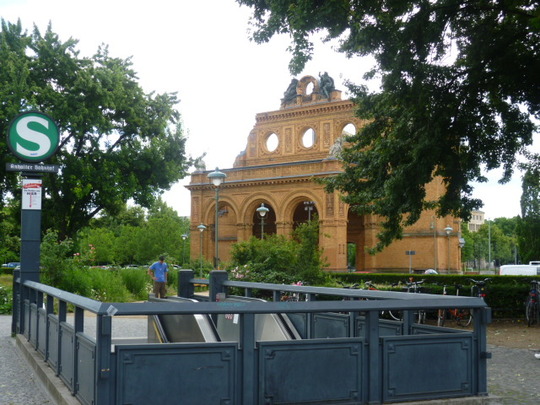 S-Bahn entrance in front of the facade of the former Anhalter Bahnhof.
S-Bahn entrance in front of the facade of the former Anhalter Bahnhof. Berlin encompasses quaint villages, rebuilt central zones with cutting-edge modern architecture, 19th century bourgeois districts, vast areas of worker and middle-class apartments from the same period, hundreds of kilometers of waterfront along rivers, canals and lakes, deep forests, countless mysteriously abandoned buildings, forlorn (but inspiring) pre-war industrial zones, and of course in the old east, the socialist architecture of the GDR. This is a city impossible to characterize with a few simple phrases.
Most people are familiar with famous Berlin landmarks such as the Brandenburg Gate, the Reichstag and the Berlin Wall. I want to highlight some discoveries I've made that show the unique character of this city, and will start in this first posting with two elements that I find particularly fascinating: the water that binds this city together and the abandoned buildings that are interspersed throughout the cityscape.
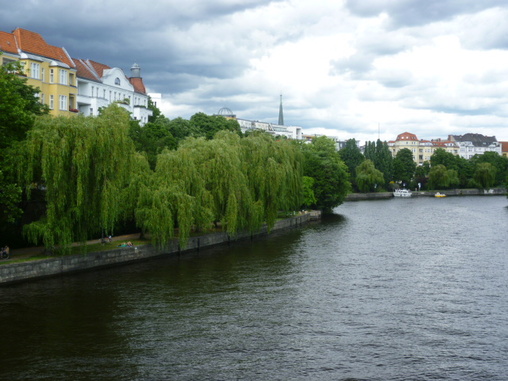 A scene along the park-lined Spree River in the heart of Berlin.
A scene along the park-lined Spree River in the heart of Berlin. 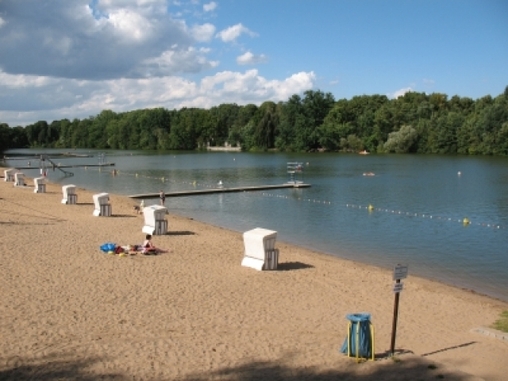 The Plötzensee, where I spent part of last Sunday swimming.
The Plötzensee, where I spent part of last Sunday swimming. Only upon returning home and reading about the lake (Plötzensee) did I learn that it was adjacent to a rather notorious Nazi prison. The next time I go I will look for the Memorial Center, which somehow we missed. It's just one of the constant reminders of how heavily history weighs on this city.
The waterfront in Berlin offers views which seem to be from totally different worlds. On the bottom left is a canal in a quiet spot in Köpenick (in the southeastern corner of Berlin), in the middle the Köpenick Castle along the Dahme River, and on the right a sculpture in the Spree called the Molecule Man by the American artist Jonathan Borofsky, If you look closely across the river behind the sculpture, you can see a remaining segment of the Berlin Wall (click on the pictures to enlarge).
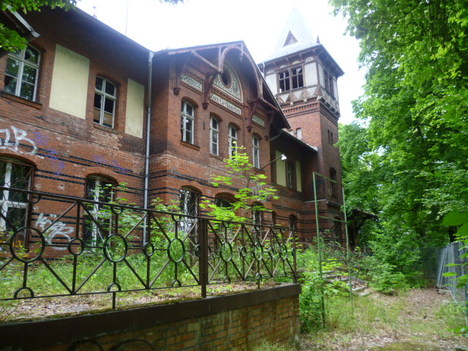 Eierhäuschen
Eierhäuschen Below is a sampling of abandoned buildings I saw on the same bike ride yesterday - all on what was previously the east side of Berlin. The first is what seems to be an abandoned home. My friend Simon and I saw a fox there. When it spotted us it just froze and stared at us for a few minutes, at quite close range, before running back into the house, where it must live. The second is a complex of buildings that I think were part of a factory. Finally, on the right is an old building hidden in trees behind barbed wire. There is more than one website devoted to buildings like this in Berlin. You can check them out here: http://www.modernruins.de/ or http://vergessene-orte.blogspot.de/
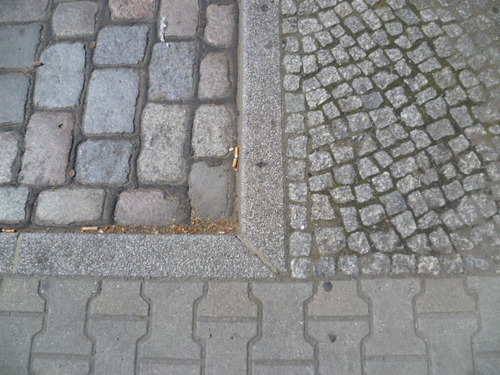 A very typical border between a street and sidewalk here.
A very typical border between a street and sidewalk here. I should mention, before I get started, that although I'm very impressed with what's on display in Berlin, Germans seem to typically view Berlin as a bit of a mess with relatively poorly maintained infrastructure. The city is living, to some degree, on the good design and construction from the past. However, for an American used to cities covered with artlessly poured cement or hastily spread asphalt, there is a lot to impress.
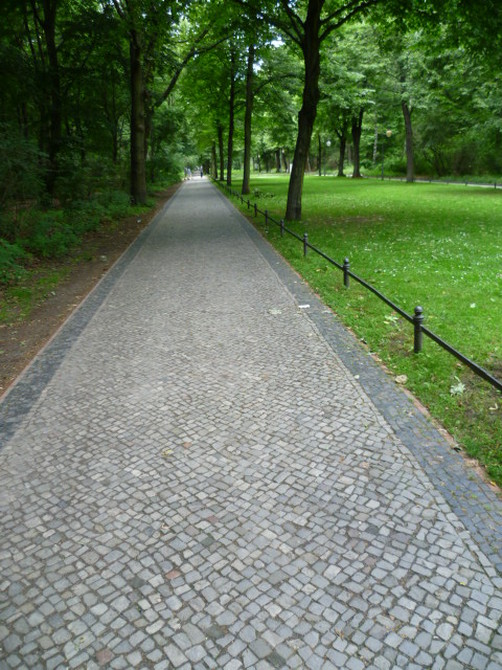 A walkway in Tiergarten, the major park in the center of the city.
A walkway in Tiergarten, the major park in the center of the city. The spaces between the paving stones or bricks allow for water to pass through to the soil below, not only helping to provide water for the trees and plants in the surroundings, but also decreasing the amount of storm runoff that occurs with rain. The city more naturally absorbs water with built surfaces like these.
In longer established sidewalks, it's quite normal to see a variety of plants living in the cracks between stones and bricks. Again, the streets and sidewalks do not exclude and dismiss nature...they are somehow a part of it. It's interesting to note that most of these environmentally 'advanced' designs date from centuries ago, The granite paving stones used in Berlin's streets almost certainly all date from before the war (they would be simply too expensive to produce today, I imagine). .
Below is a sampling of sidewalk and street surfaces.
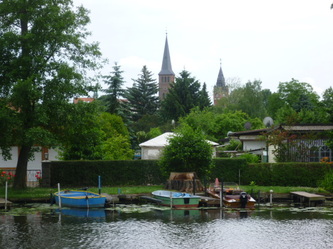
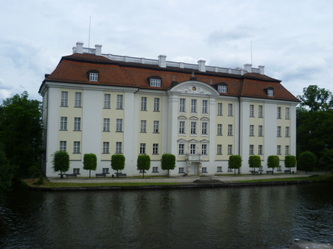
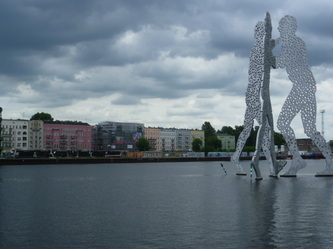
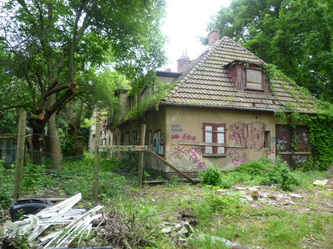
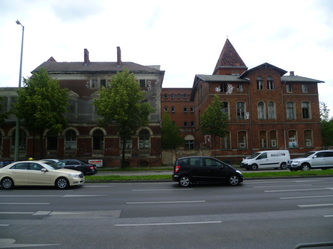
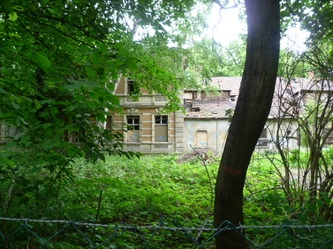
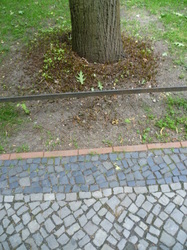
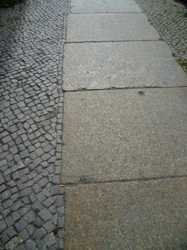
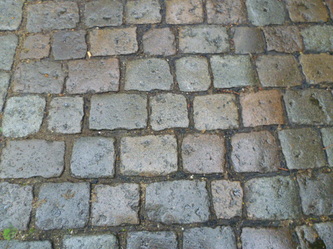
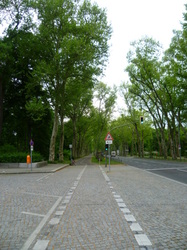
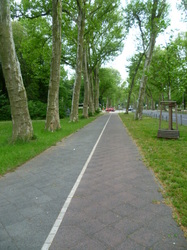
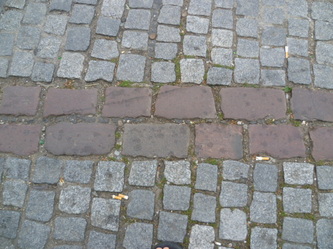

 RSS Feed
RSS Feed

